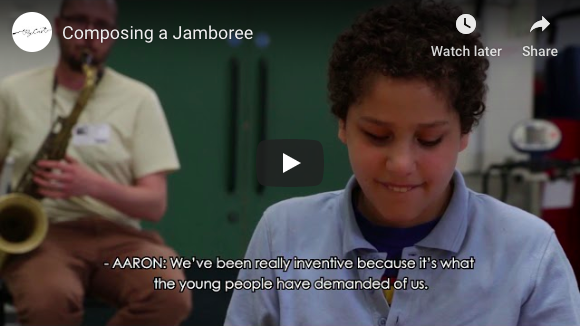
Composing a Jamboree

Resources for teachers and specialist school staff

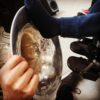
Jamboree is Oily Cart’s new piece of sensory gig-theatre made for and with teenagers with profound and multiple disabilities. It will tour in Autumn 2019 and Spring 2020. Here Artistic Director Ellie Griffiths talks about the creative process…
The idea
I love going to gigs and am often struck by how much more relaxed and welcoming they can feel in comparison to theatre. Last year I was at a Balkan music gig where we could feel the vibrations of the tuba through the floor. Everyone, of all ages, was up and dancing. It was a really inclusive, sensory experience, where the audience were able to express themselves just as much as the performers. By making a piece of sensory gig-theatre, I wanted to make something age appropriate for a teen audience, that made space for each person onstage and in the audience to be the boldest version of who they are. (I also just wanted it to be really fun. I’ve been inspired by organisations Sprog Rock and Bubble Club, who take their fun extremely seriously!)
The process
In making Jamboree we have explored a co-creation process with teenagers labelled as having profound and multiple disabilities. This began by embedding two musicians in a school to jam with young people who communicate in a huge range of ways. The musicians had to follow each pupil’s lead and value their input as equal musicians, which often challenged their own biases of what music ‘should’ sound like. We grandly labelled this a ‘co-composition’ process, soon realising (with the help of evaluator Joe Wright) that to do this meaningfully would take much more time and contact than we could achieve within the scope of this project.

We did however find a way of growing the show out of seeds of input from young people we jammed with. In one case this was a melody line based on a vocalisation. One pupil’s interest in the noise of a metal slinky rattled against a wall led us to make a slinky instrument which leads a whole noise jam section of the show.
“The human soul doesn’t want to be advised or fixed or saved. It simply wants to be witnessed – to be seen, heard and companioned exactly as it is”
Parker J Palmer
All the creative work rippled outwards from these seeds of input, to build an experience directly inspired and influenced by our collaboration with the students. The musicians and Musical Director Max Reinhardt created compositions which centered around them as musical ideas. Flavio Graff, the Designer, and I then created sensory and visual effects to compliment these compositions and structured them into a satisfying atmospheric journey through the show. The co-creation approach threw up surprises that were greater than any show I could’ve thought up in my head.
Feeding into this as a core band member was Jovana Backovic, a folk singer from Serbia, with a PhD in Balkan music. She identified a synergy between the ways we were making the show and the natural journeys of folk music: from source, to being interpreted and passed on orally. In the tour, each week the band will arrive at a new place and jam with young people there to influence the music in the gig at the end of that week, so each will feel distinct and unique to the young people in the audience.
Attempting an Inclusive process
A learning curve for me in this project was making our creative process more inclusive for our diverse cast. Robyn Steward, who is a cast member but also an internationally respected autism consultant, gave me great advice on using visual scores and scripts. She highlighted how many of the standard ways we devise work can create barriers. A lot of this is finding ways to make people feel safe in all the unknowns, and making sure the performers have a sense of ownership and control at every point. It’s always confronting and difficult to realise areas where your well-intentioned efforts are failing. I was continually faced with my own assumptions and neurotypical biases throughout this process. I’m hugely grateful to Robyn for her generosity and patience!

The future
At Oily Cart we all feel really passionate about the themes of this show – about young people who are non-verbal being listened to. So much power in this country is rooted in verbal language. We hope to use our #amplify campaign over the next year to amplify the voices of young people who are non-verbal as artists and creators that can and should have influence on the world we live in.

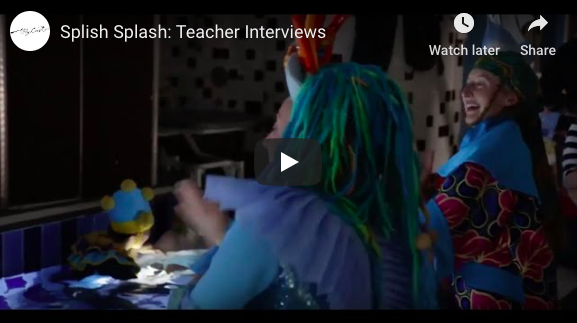
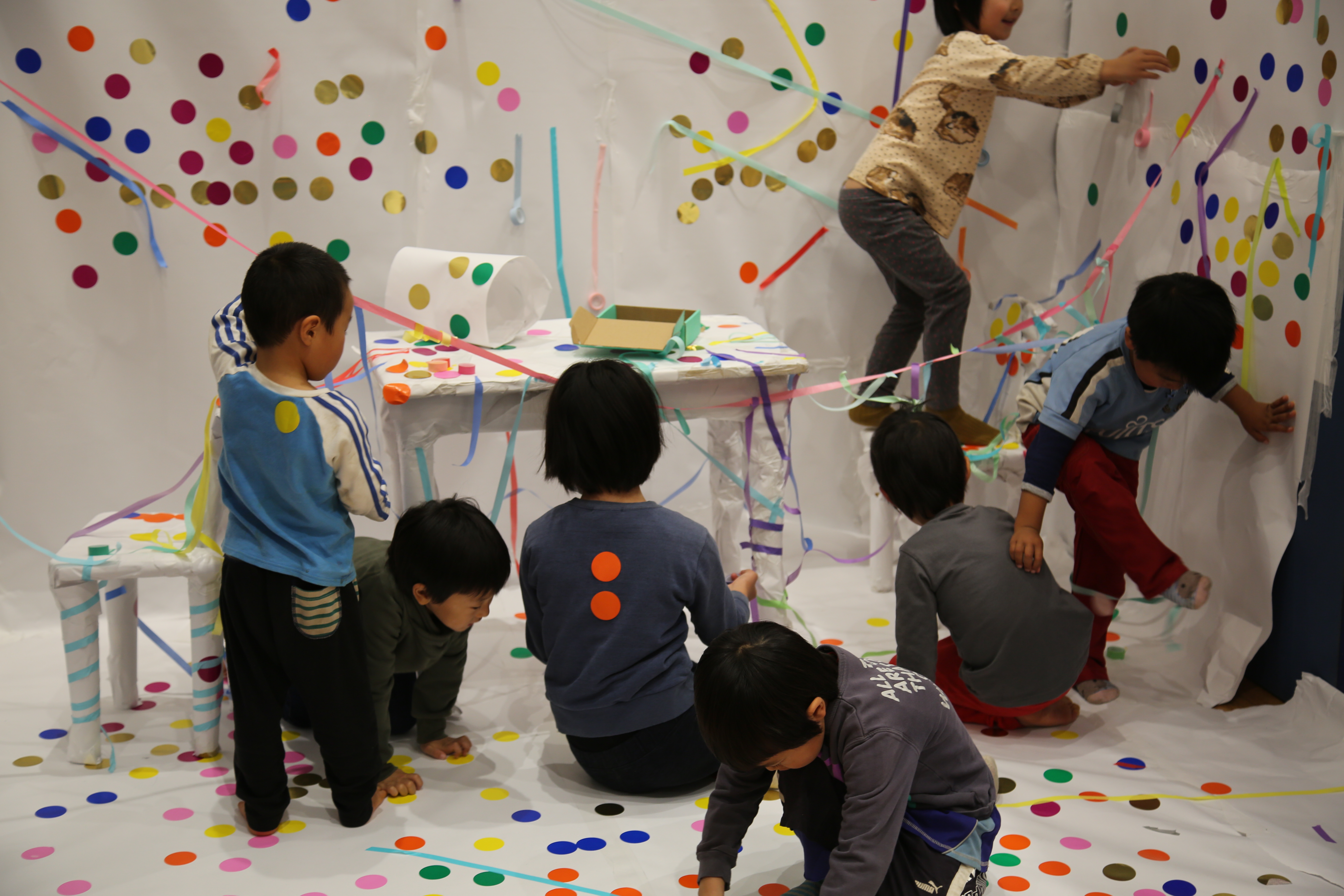
This project was funded by the National Lottery, through Creative Scotland.
This January, I was delighted to be invited to be part of the wonderful Theatre for Young Audiences Inclusive Arts Festival in Tokyo Japan. A big part of this was presenting a film I made last year in collaboration with Geraldine Heaney and pupils from St Crispin’s School. We made ‘Frame’ as part of an Imaginate artist residency. It’s still one of my favourite projects, with fond memories of working with the staff and pupils over ten weeks. At the festival, we presented the film as part of an interactive installation or play space, with an accompanying workshop and presentation. The Inclusive Arts Festival featured artists, performers, audiences and participants with a range of diverse needs. It’s been a hugely nourishing experience to meet people from across the globe, all working towards a common goal of making the arts more open and accessible. It was also fascinating to understand the Japanese perspective, where the word ‘inclusive’ has not been commonly used to this point. In many ways, the 2020 Olympics has opened up this conversation, as the London games did for the UK in 2012.
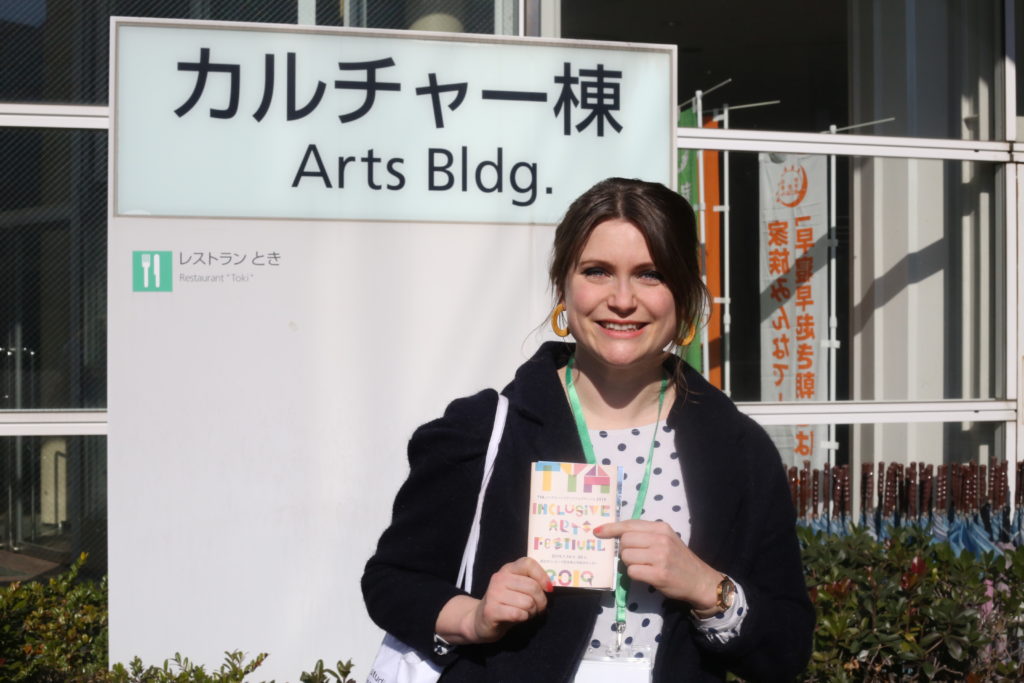
During the festival, I was inspired by how easy it was to communicate regardless of the language barriers. It’s made me think a lot about listening. Sometimes listening is through body language, eye contact, touch, sensory play. Sometimes it’s about leaving space. Does spoken language sometimes actually stop us from (really) listening? It was fascinating being absorbed in the many different cultures, D/deaf and hearing. It made me think harder about how to open up creative processes to performers and collaborators with different needs.

For me, new into being Artistic Director of Oily Cart, a particularly special aspect of being at the festival was seeing two new sensory performances that have been made for young audiences with complex needs in Japan. This is the direct impact of a trip made two years ago by Tim and Amanda Webb, who did a series of training workshops with local artists.
It was extremely moving to hear the artists talk so passionately about this area of work and to see how invested they are. At the heart of this shift is the brilliant Kaori Nakayama who has tirelessly created opportunities for young audiences with complex needs since first meeting and training with Oily Cart several years ago. It’s so exciting to see more and more sensory performances crop up across the globe, and it makes me feel extremely proud and happy that Oily Cart have been at the centre of this movement. I can’t wait to roll up my sleeves with this brilliant company, connecting outwards, and continuing to share our practice as widely as possible.
Huge thanks to St Crispin’s School, particularly the young artists in the film. Thanks to Geraldine, my partner in crime, the whole team at the TYA Inclusive Arts Festival. And finally thank you to Creative Scotland, and The Great Britain Sasakawa Foundation, without whose support the trip would not have been possible.
